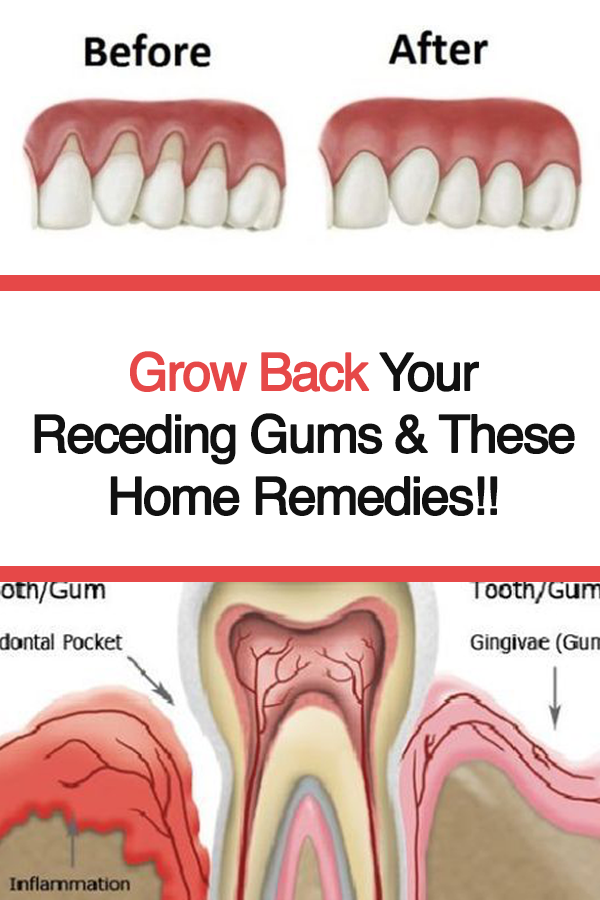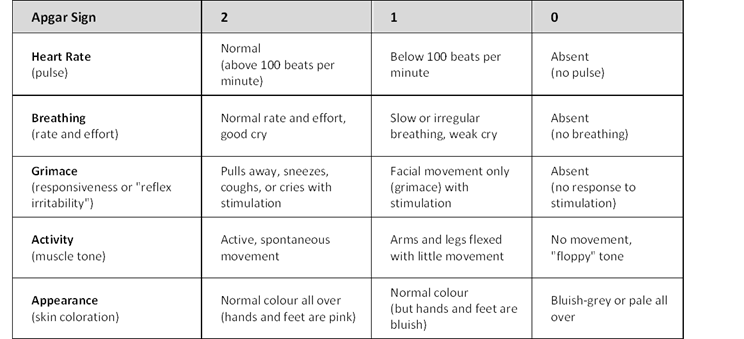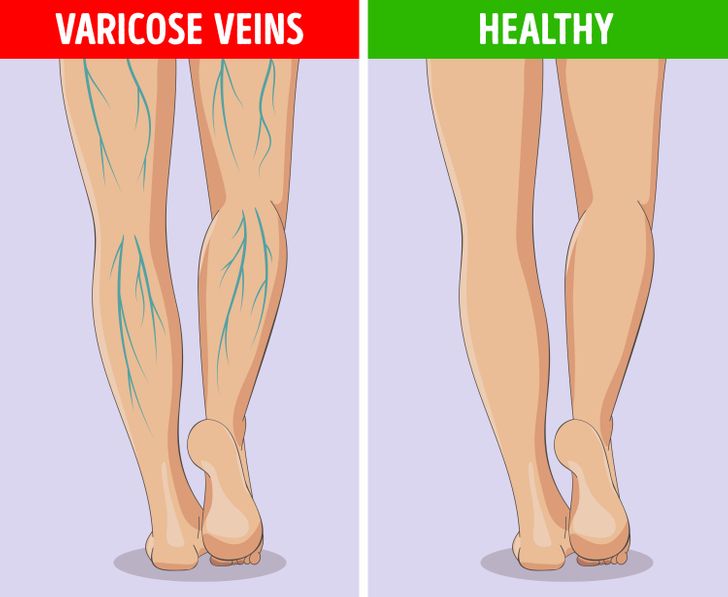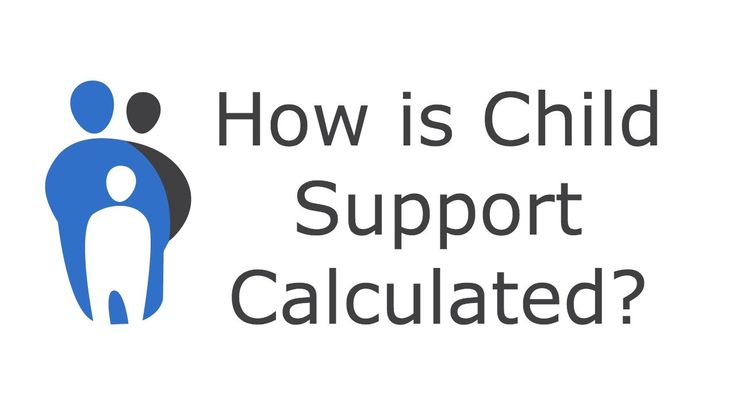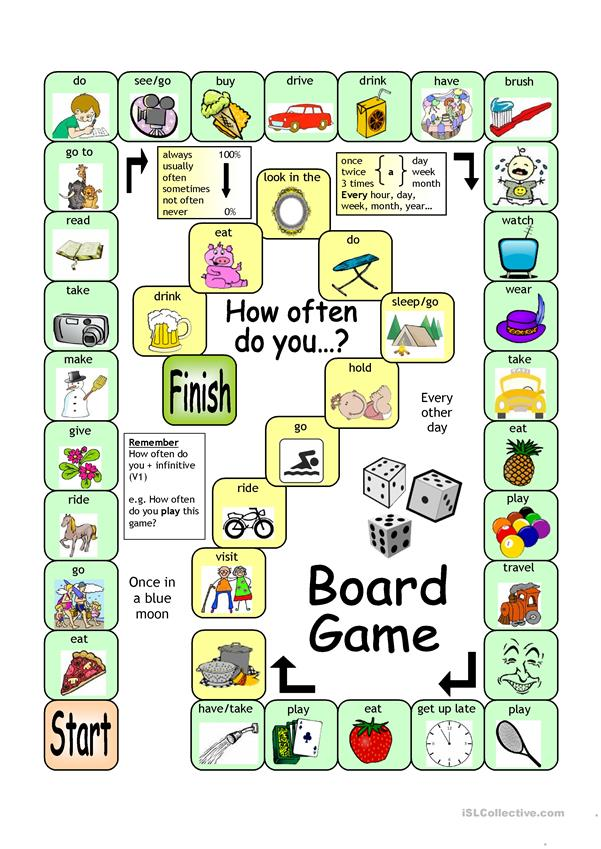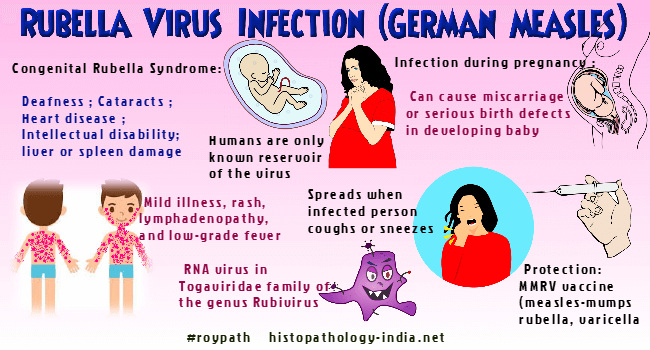How a tooth grows
How Do Teeth Grow? | Blog
We all have them and use them every day, but where do teeth come from? How do teeth grow through gums? And what makes up teeth? Learning more about how our teeth develop and what they consist of can help us take better care of them in our day-to-day lives.
To help you preserve your teeth’s health, this article will answer all your tooth growth questions from “How do teeth grow in your mouth?” to “How do teeth grow back?” Keep reading if you’ve ever wanted to know more about what goes on in your mouth.
What Are Teeth Made Of?
Although our teeth and bones contain more than 99% of our body’s calcium, teeth are not bone. Despite their similarities, bone is living tissue, whereas teeth are not. Without any living tissue, the outermost layer of your teeth is even harder than bone. Indeed, this layer — known as enamel — is the hardest substance in your entire body.
So if your teeth aren’t bone, what are they? There are four different types of tissue within a tooth — enamel, dentin, cementum, and pulp. Unlike bone, these tissues are not living.
Check out the functions of these four tissues.
- Enamel: As the hardest, outermost layer, enamel covers the tooth to protect it from the pressure of chewing, drastic changes in temperature, and harmful bacteria.
- Dentin: Dentin is a yellow substance that’s as hard as bone and makes up most of the tooth. Teeth’s natural yellowish tint comes from dentin.
- Cementum: Another hard-as-bone substance, cementum is under the gumline and covers the outside of the root to hold the tooth in place on the jawbone.
- Pulp: As the core of the tooth, the pulp contains connective tissue, nerves, and blood vessels. The pulp consists of two parts — the pulp chamber in the crown and the root canal within the tooth’s root. The pulp delivers nourishment to the tooth by allowing blood vessels and nerves to enter through the root, into the canal, and up to the pulp chamber.
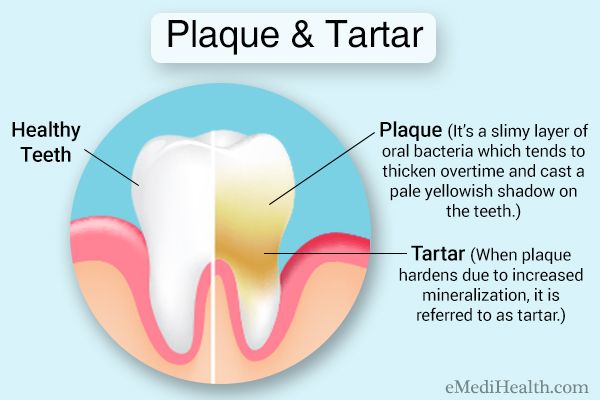
How Do Teeth Develop?
Now that you know what teeth consist of, let’s look at how they develop and change over your lifetime.
In Utero
Teeth first start to develop while a baby is still in the womb, which is why the mother’s diet should include plenty of calcium and vitamin D. Around six weeks into a pregnancy, the basic substance of the teeth begins to form. At about three or four months of pregnancy, the hard tissue that surrounds teeth forms.
6-12 Months
After a baby’s birth, teeth slowly begin to start protruding through the gumline. Although every child is different, a baby’s teeth usually start to come in around 6 months. The first tooth to grow through gums is typically a lower, middle front tooth.
1-3 Years
During these early years, teeth continue to erupt, with the back molars being the last teeth to come in. In general, a child’s complete set of 20 primary teeth has fully come in by the time they are 3. Though these baby teeth will eventually fall out, it’s still crucial to practice good dental hygiene to prevent severe decay and spacing problems for adult teeth.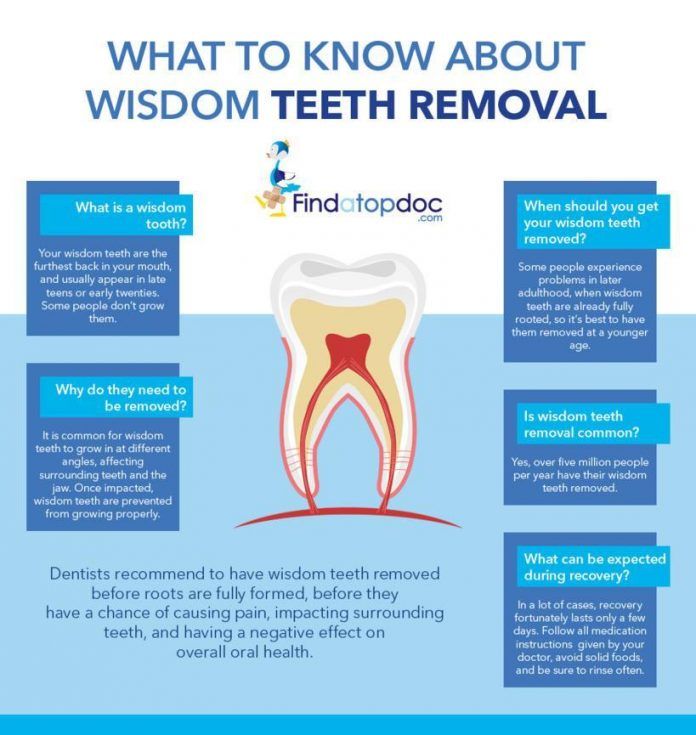
6-12 Years
Around 6 years, a child will begin to lose their primary set of teeth so the secondary set of teeth can grow back in its place. After the child loses their first few baby teeth, the first permanent molars will begin to erupt. Children typically lose their last baby tooth at around 12 years, leaving them with 28 permanent adult teeth.
Adolescent to Young Adult
During the teenage to young adult years, four final teeth will begin to come in. These four teeth are the third set of molars, commonly referred to as wisdom teeth. After these molars come in, there will be 32 adult teeth by around age 21. Often, wisdom teeth can become impacted or cause overcrowding and need surgical removal. In other cases, wisdom teeth might never develop.
Adult
Throughout the adult years, follow proper oral hygiene to keep your permanent teeth healthy. If you lose or damage a tooth, the only option is an artificial tooth replacement, because adult teeth do not grow back.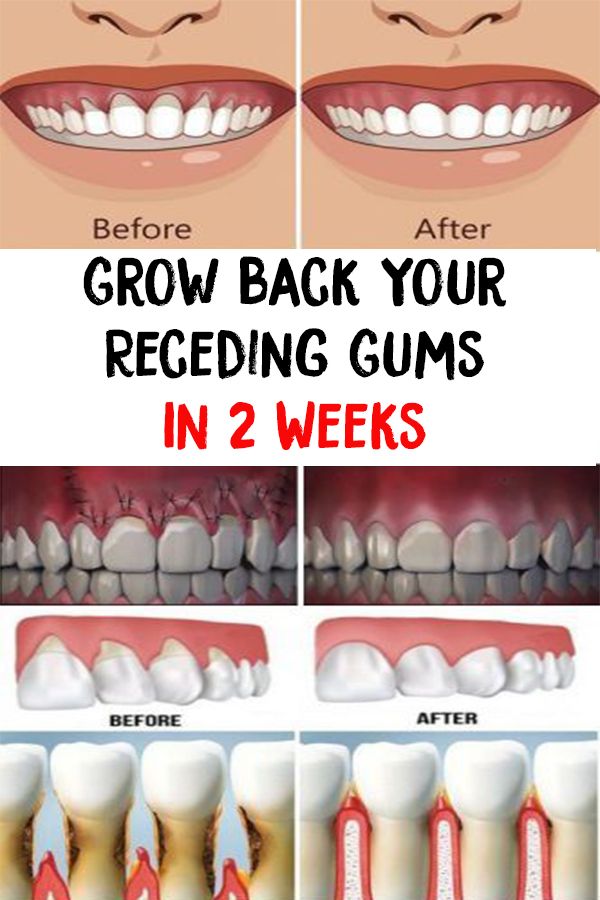 Following a daily oral hygiene routine and a healthy diet will protect adult teeth from decay.
Following a daily oral hygiene routine and a healthy diet will protect adult teeth from decay.
Older Adult
Even the most avid tooth brusher’s teeth become more vulnerable to damage with age. As the years go by, the gums become more likely to recede or develop gum disease, especially for those who smoke or drink. However, keeping up with a daily brushing and flossing regimen can help avoid dental corrections like crowns, dental implants, or dentures.
How Can I Impact the Growth of My Teeth?
Much of the way teeth grow in is due to genetics and heredity, such as your natural jaw size and whether the jaw has any misalignment. Though some factors are out of your control, additional elements can affect the growth of your teeth. Here are the ways you may impact your teeth’s growth.
Myofunctional Habits
Myofunctional habits are repeated behaviors that can permanently affect the muscles or functions of the face and mouth. These types of habits include the following.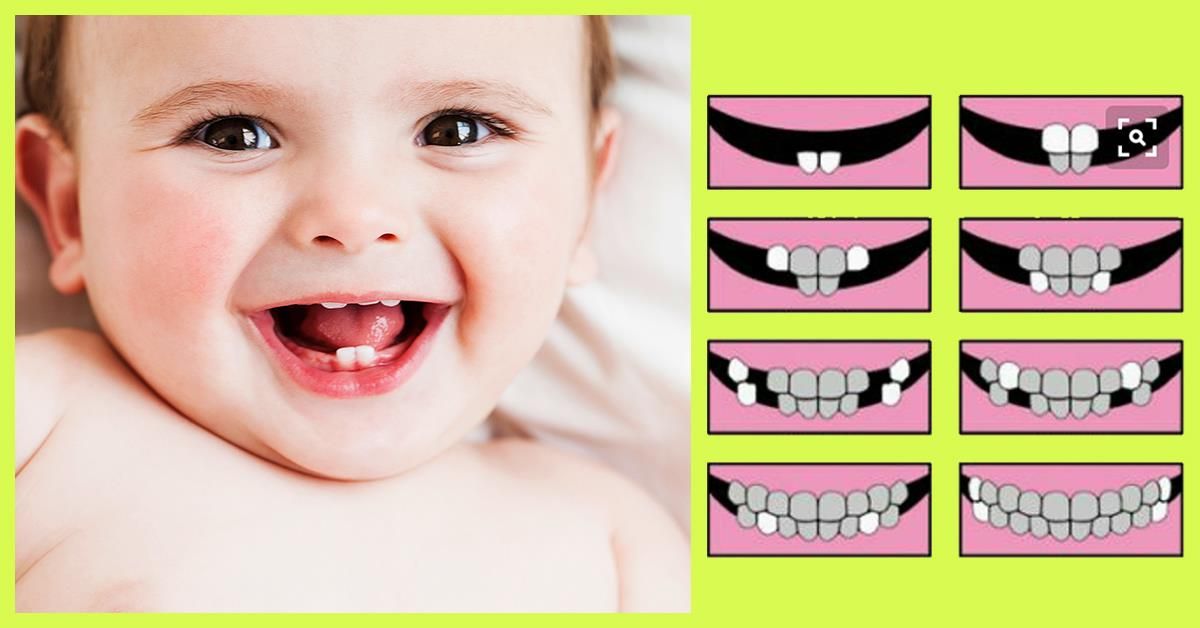
- Thumb-sucking: Sucking the thumb can shift the jaw and impact the way a child’s teeth line up if the habit persists. Talk with your dentist if your child keeps sucking their thumb after age 4.
- Bottle or pacifier use: Like thumb-sucking, bottle or pacifier use after age 4 can lead to dental problems and teeth alignment issues.
- Mouth breathing: Although there’s nothing wrong with occasionally breathing through your mouth, continuous mouth breathing, especially when you’re sleeping, can cause complications. Frequent mouth breathing may result in crooked teeth, bad breath, and gum disease.
- Tongue thrusting: Tongue thrusting occurs when the tongue presses too far forward in the mouth, resulting in an “open bite.” Because the tongue helps swallow food, tongue thrusting can lead to swallowing issues, allergies, or reverse swallow.
Smoking
Smoking can result in . Even those who live with regular exposure to secondhand smoke can become more likely to develop cavities. Keep your home and car smoke-free to create a healthy environment for your teeth and others.
Even those who live with regular exposure to secondhand smoke can become more likely to develop cavities. Keep your home and car smoke-free to create a healthy environment for your teeth and others.
Facial Injury
A hit to the mouth or face can cause trauma to teeth or knock them out of place, resulting in some missing or crooked teeth. Losing baby teeth too soon can lead to permanent teeth growing in slanted instead of straight. Although accidents are unavoidable, you can reduce the risk by never walking or running with anything in your mouth and wearing a mouthguard during contact sports.
Nutrition
Proper nutrition is vital to healthy dental development, especially in children. Poor nutrition can lead to tooth decay and potentially crooked teeth, so it’s essential to follow a healthy diet. Try to limit your intake of sugary snacks, juice, and sticky foods, such as caramel and dried fruit.
Dental Care
Of course, proper dental care is the foundation of good tooth growth. Brushing your teeth and flossing twice per day, along with regular dental checkups, can help prevent or treat dental problems like cavities or gum disease. Make sure you stay on top of your dental routine to help your teeth develop correctly.
Brushing your teeth and flossing twice per day, along with regular dental checkups, can help prevent or treat dental problems like cavities or gum disease. Make sure you stay on top of your dental routine to help your teeth develop correctly.
Contact AZ Family Dental to Learn More About Keeping Your Teeth Healthy
Now that you know what teeth consist of and how they grow, you can have a better idea of how to take care of them. To begin making your personalized dental plan, contact AZ Family Dental. At AZ Family Dental, we offer a full continuum of dental care — from routine cleanings to wisdom tooth removal — and treat each of our patients like family members.
If you’re looking for quality dental care at a fair price in Glendale, AZ, schedule an appointment with AZ Family Dental today!
Understanding How They Grow In
Written by WebMD Editorial Contributors
In this Article
- Difference Between Primary Teeth and Permanent Teeth
- Permanent Tooth Eruption
- Importance of Dental Care
- Braces for Crooked or Crowded Permanent Teeth
When your child is born, they have a full set of 20 primary teeth that grows in by the age of three.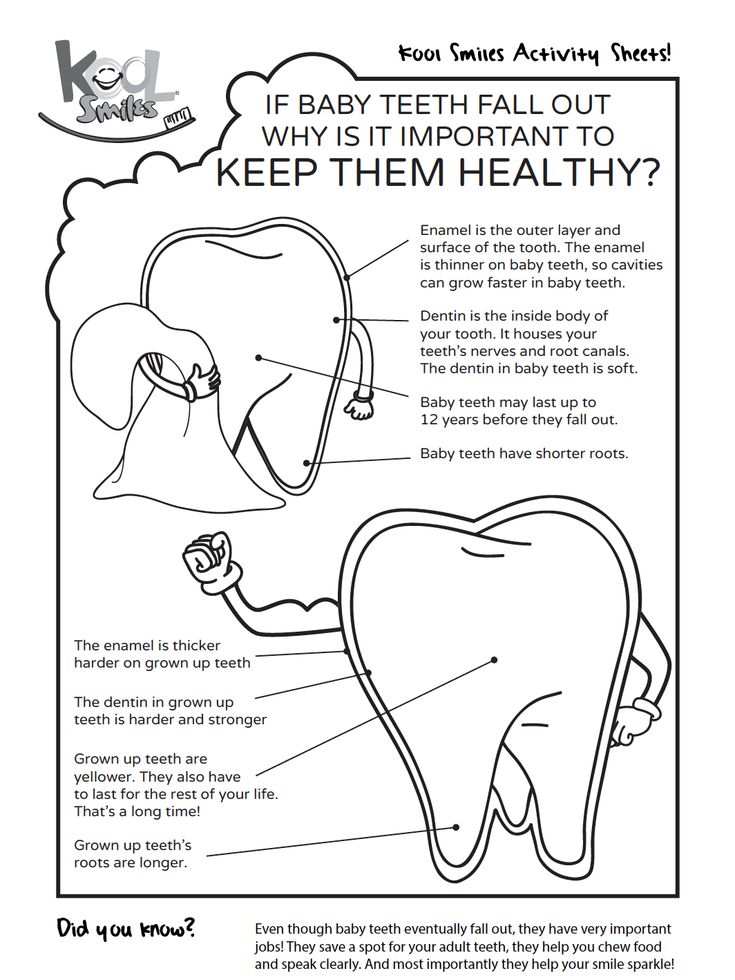 After that, your child’s permanent teeth push out the baby teeth throughout childhood until they're all completely replaced. This process is known as eruption.
After that, your child’s permanent teeth push out the baby teeth throughout childhood until they're all completely replaced. This process is known as eruption.
Difference Between Primary Teeth and Permanent Teeth
Your baby’s primary teeth, also called baby teeth, begin to loosen and fall out around the age of six. For most children, loss of primary teeth happens in a predictable pattern, and permanent teeth replace the ones falling out.
The bottom middle teeth, called lower central incisors, fall out first. They are followed by the top middle teeth, also called upper central incisors. The remaining teeth your child loses include:
- Lateral incisors
- First molars
- Canines
- Second molars
Usually, your child’s primary teeth come out naturally as the permanent teeth push their way up into place. If your child’s baby teeth decay or break from an accident, a dentist may need to pull them out. When this happens, permanent teeth may come in earlier than expected. Early eruption of permanent teeth can lead to crowding, causing the teeth to come in crooked.
Early eruption of permanent teeth can lead to crowding, causing the teeth to come in crooked.
Permanent teeth are also called adult teeth or secondary teeth. They begin to develop around birth and continue through childhood until the teeth erupt through the gums. Most people have all 32 permanent teeth by the age of 21. In some cases, the third molars, also called wisdom teeth, don’t develop or erupt properly. Because of this, having 28 permanent teeth is also considered normal.
Permanent Tooth Eruption
When your child is around six years old, their first permanent molars begin to erupt. These four molars come in behind the primary teeth. Following these molars, your child’s other permanent teeth take the place of primary teeth as they’re lost.
These changes can be uncomfortable for your child. You can help make the process easier by:
- Providing reassurance that losing baby teeth is a normal part of the process for getting permanent teeth.
- Using a cold compress to relieve discomfort
- Offering pain medication as recommended by your child’s pediatrician
- Celebrating the loss of baby teeth and the excitement of seeing permanent teeth come in
While eruption can vary by child, you can generally these ages for permanent teeth coming in:
- First molars – Around 6 to 7 years old
- Central incisors – Around 6 to 8 years old
- Lateral incisors – Around 7 to 8 years old
- Canine teeth – Around 9 to 13 years old
- Premolars – Around 9 to 13 years old
- Second molars – Around 11 to 13 years old
- Third molars (wisdom teeth) – Around 17 to 21 years old if they come in at all
Importance of Dental Care
It’s always good to take care of baby teeth to prevent tooth decay.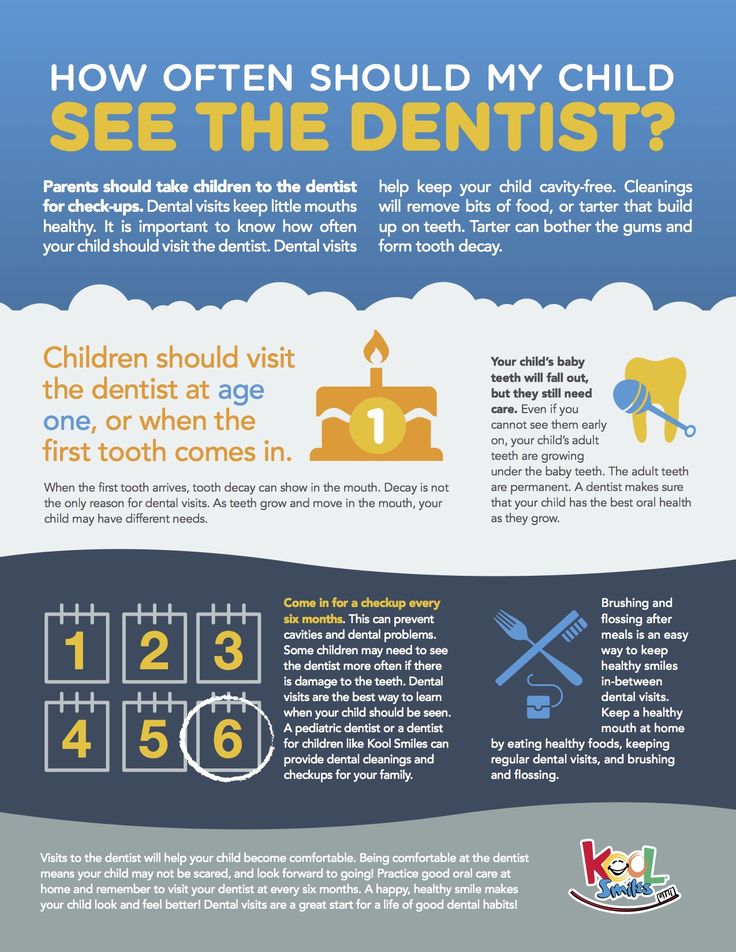 As your child’s permanent teeth come in, it becomes increasingly important to promote dental hygiene. If your child’s permanent teeth are damaged, they may need expensive dental work to repair the teeth in the future. If the damage is too bad, their permanent teeth must be removed.
As your child’s permanent teeth come in, it becomes increasingly important to promote dental hygiene. If your child’s permanent teeth are damaged, they may need expensive dental work to repair the teeth in the future. If the damage is too bad, their permanent teeth must be removed.
Your child should brush their teeth twice per day. It’s important to supervise and help until your child is able to brush independently. Flossing between teeth is especially important if your child has permanent teeth coming in that are touching because bacteria can get trapped in smaller spaces.
A big part of dental care is watching what you eat. Maintain a healthy diet and avoid sugary foods that promote tooth decay. You should also avoid hard foods that may cause chips and breakage to either baby teeth or permanent teeth.
Schedule regular dental visits once your child has baby teeth to monitor for proper growth and development. It also helps your child to get more comfortable with visiting the dentist’s office for regular cleanings.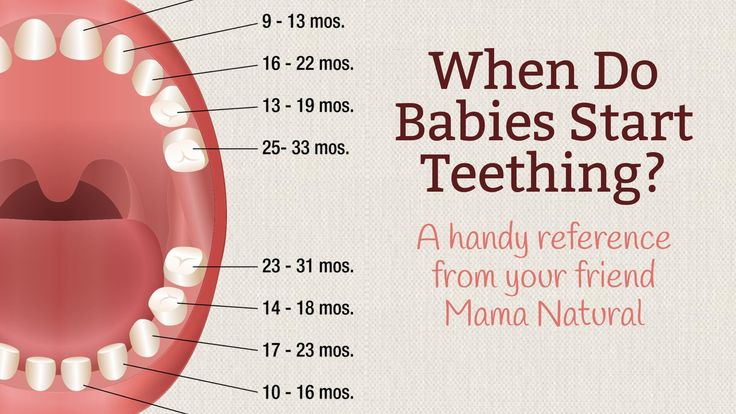
Braces for Crooked or Crowded Permanent Teeth
If your child’s permanent teeth come in crooked or crowded for any reason, they may need braces. Many people think braces are only used to straighten teeth that are crooked. However, orthodontic treatment improves your overall dental health by:
- Preventing decay and gum disease
- Reducing your chance of losing teeth
- Improving your ability to chew
- Improving your speech if it is affected by your bite
- Decreasing wear on your enamel from teeth touching
- Fixing jaw misalignment that leads to an overbite or underbite
Your orthodontist talks to you about your child’s dental needs and recommends a variation of braces treatment. Traditional braces use brackets that are cemented to your teeth. A thin wire connects all the brackets together and moves your teeth slowly over time until the desired results are achieved.
Clear aligners work similarly by moving your teeth incrementally over time, although you can take the aligners in and out between meals and brushing.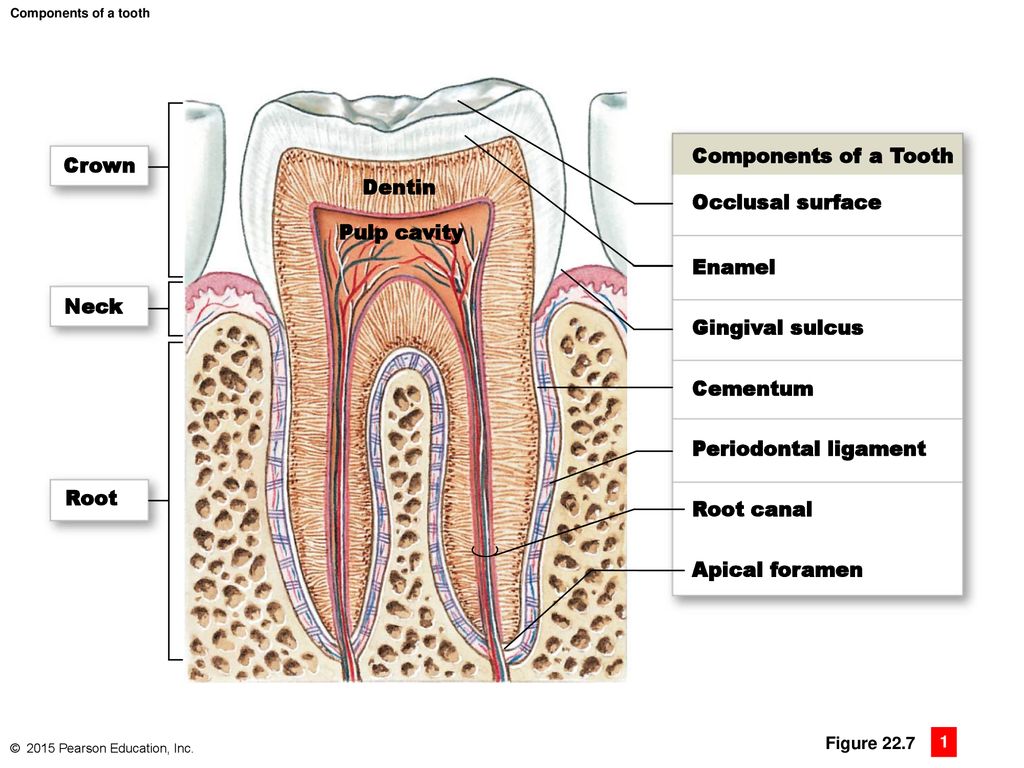 Most people need braces for one to three years. Once your braces treatment is complete, you wear a retainer at night to maintain the results.
Most people need braces for one to three years. Once your braces treatment is complete, you wear a retainer at night to maintain the results.
How a wisdom tooth grows
An adult normally has 32 teeth. The last two teeth in each dentition are called wisdom teeth. 28 teeth grow at an early age, and wisdom teeth erupt between the ages of 17 and 30. Our ancestors really needed wisdom teeth - due to their diet and lack of oral hygiene, some molars fell out by the age of 20-30 , and wisdom teeth replaced them to ensure normal chewing.
Wisdom teeth got their name just in connection with late eruption. The unusualness of these teeth lies in the fact that they do not have milk predecessors, and when they appear, they cause a lot of trouble, a feeling of discomfort and serious pain to their owner.
This is due to the fact that at the time of the appearance of these teeth, the bone tissue of both jaws is already formed and it often happens that, due to lack of space on the jaw arch, the lower wisdom tooth tends to take the wrong place.
Problems with wisdom teeth eruption
Cutting a wisdom tooth is always painful. The main reasons for this are thick walls of the dental sac, thickened mucosa and reduced growth factors. In addition to the pain of the process itself, teething of wisdom teeth can cause many other complications.
The wisdom tooth sometimes does not erupt completely, restricting the surrounding teeth. This situation, as a rule, entails local inflammation and pain.
The time during which the wisdom tooth is cut can be quite long, and the inflammation will constantly bother you, manifesting itself as an increased temperature of the whole body and sensitive pains, due to which it is sometimes difficult even to open your mouth. This condition is fraught with inflammation of the tissues surrounding the problematic tooth, up to the bone, and therefore requires the immediate intervention of a qualified dentist.
Often when a wisdom tooth is growing, its effective cleaning is difficult (due to the location of the wisdom teeth in the depth of the jaw) and caries occurs.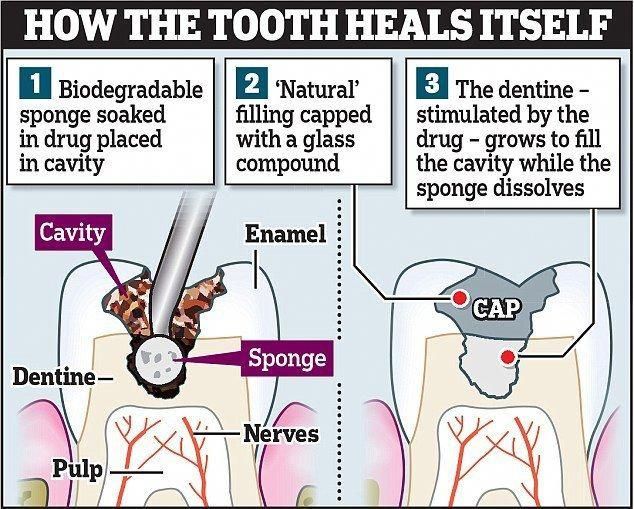 Incorrect position during the eruption of the wisdom tooth also increases the risk of caries on the adjacent tooth due to difficult access to the spaces between these teeth. If these symptoms appear, you should consult a dentist and carry out appropriate treatment. Very often, in this case, the removal of a wisdom tooth is recommended, especially if all other teeth are developed normally.
Incorrect position during the eruption of the wisdom tooth also increases the risk of caries on the adjacent tooth due to difficult access to the spaces between these teeth. If these symptoms appear, you should consult a dentist and carry out appropriate treatment. Very often, in this case, the removal of a wisdom tooth is recommended, especially if all other teeth are developed normally.
Wisdom teeth
In rare cases, a cyst and swelling may occur in the tissues surrounding an erupting wisdom tooth, which requires immediate surgical intervention by a dentist.
If the wisdom tooth is misaligned during eruption, it is highly likely that such a tooth will significantly affect the position of the remaining teeth, which causes a change in bite.
In addition to aesthetic problems, this can also cause functional problems. For example, if the wisdom tooth is displaced towards the vestibule of the oral cavity, serious injury to the mucous membrane of the cheeks, lips or tongue can occur, causing erosions and ulcers.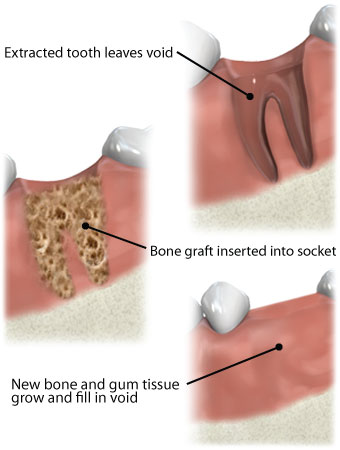
Sometimes, with a lack of space in the dentition or in the case of an incorrect inclination of the wisdom tooth itself, an anomaly such as a “submerged wisdom tooth” develops. These teeth are usually removed.
It is possible that the wisdom tooth does not erupt at all. Despite its absence, such a tooth is dangerous for its complications. It can damage the roots of neighboring teeth or provoke neuralgic pain. In this case, it is necessary to consult a dentist and, most likely, the tooth will have to be removed.
Incorrect position of the wisdom tooth
Pericoronitis
At the moment of eruption of the lower wisdom teeth, when only part of the tooth has appeared, acute inflammation and even accumulation of pus can occur in the formed hood between the gum and the tooth. This causes such a serious disease as pericoronitis (pericoronitis).
The main symptoms of pericoronitis are:
pain and swelling of the gums surrounding the wisdom tooth,
bad breath,
bad taste.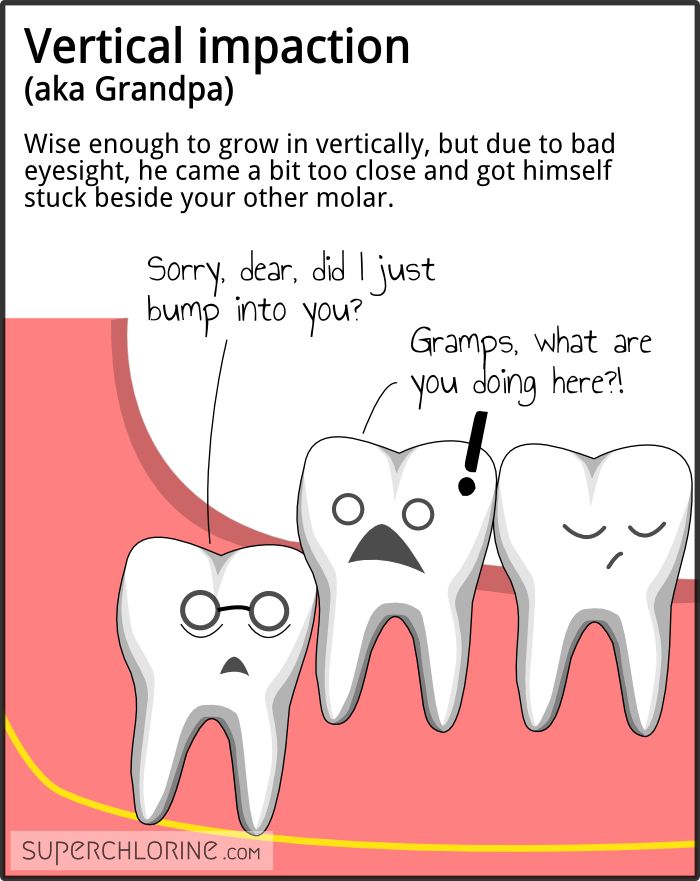
If these symptoms appear when you are cutting your wisdom tooth, you should immediately consult a dentist.
Periodontitis
Sometimes it happens that a wisdom tooth erupts quite smoothly, but due to its inconvenient position during brushing, it is not properly cleaned of plaque. It is also problematic to remove tartar and plaque on this tooth in dentistry. Because of this, bacteria begin to accumulate around the tooth, causing inflammation of the gums - periodontitis, which can then turn into osteoperiostitis. In this case, the tooth must be removed.
Periodontitis
How to get rid of the pain associated with the teething of wisdom teeth
Usually the teething of the figure eight, even without complications, which happens very rarely, is accompanied by serious pain. In this case, doctors most often resort to removing the hood over the wisdom tooth. This operation consists in excision of the gums in order to make way for the growing tooth.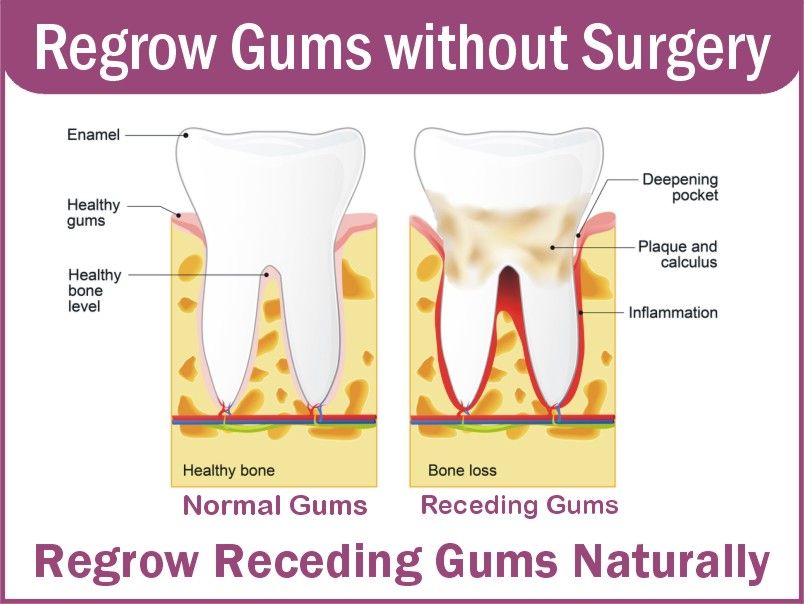 However, even this does not always relieve pain - then the tooth has to be removed. Removal should not be afraid - although it is quite complicated, this operation does not lead to functional disorders, since modern people do not actually need a wisdom tooth.
However, even this does not always relieve pain - then the tooth has to be removed. Removal should not be afraid - although it is quite complicated, this operation does not lead to functional disorders, since modern people do not actually need a wisdom tooth.
There are also folk remedies for getting rid of pain. For example, in the presence of inflammation, you can rinse your mouth with various antiseptics, including a solution of soda and salt. You can also relieve pain with analgesics and use various herbal infusions, such as chamomile.
13.03.2018
Morozov Kirill Vladimirovich
Orthodontist
Literature used
Therapeutic dentistry, E. V. Borovsky et al., Moscow., 1998;
Surgical stomatology: Textbook for medical stomatological institutes / A. I. Evdokimov, I. G. Lukomsky, I. M. Starobinsky; With the participation of Associate Professor G. A. Vasiliev and Professor M. B. Fabrikant. - M .: Medgiz, 1950. 2nd ed.
←Back to the list of articles
Everything you need to know about wisdom teeth
Are wisdom teeth necessary? Which is better: treat them or remove them? And is it right to get rid of what is given to us by nature itself? Many people ask these questions.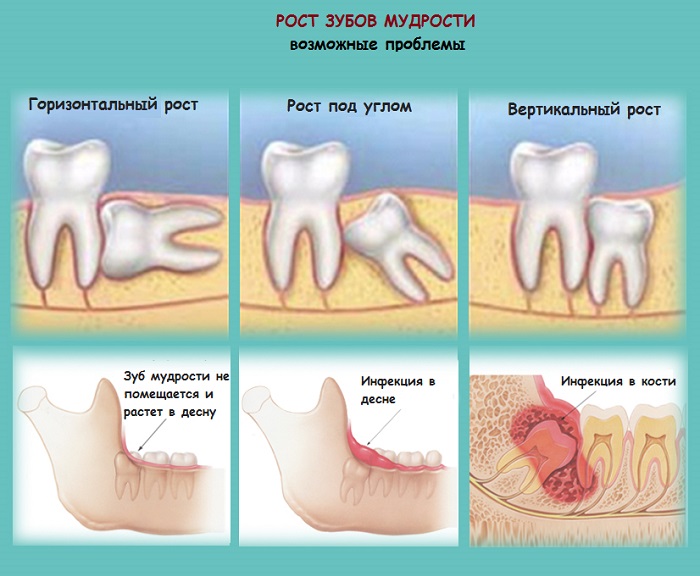 The doctor of our clinic knows the answers, maxillofacial and orthognathic surgeon Artem Vasilievich Dubnov .
The doctor of our clinic knows the answers, maxillofacial and orthognathic surgeon Artem Vasilievich Dubnov .
When are wisdom teeth cut?
Wisdom tooth (colloquially "eight") is called the 8th, extreme tooth in the dentition, or the third molar. It got its name because it grows last when a person reaches intellectual maturity - becomes wise.
Many are sure that the appearance of "eights" does not depend on how old a person is. This is a delusion: the roots of the wisdom tooth begin to form at the age of 15-17, and itself Wisdom tooth grows up to an average of 25 years of age . Sometimes it erupts a little later or a little earlier, and sometimes it does not appear at all. But if B and m is already 27 years old, and there are no wisdom teeth yet, expecting them to erupt someday is definitely not worth .
Older patients who went to the dentist thinking they were cutting a wisdom tooth most often suffered from pericoronitis.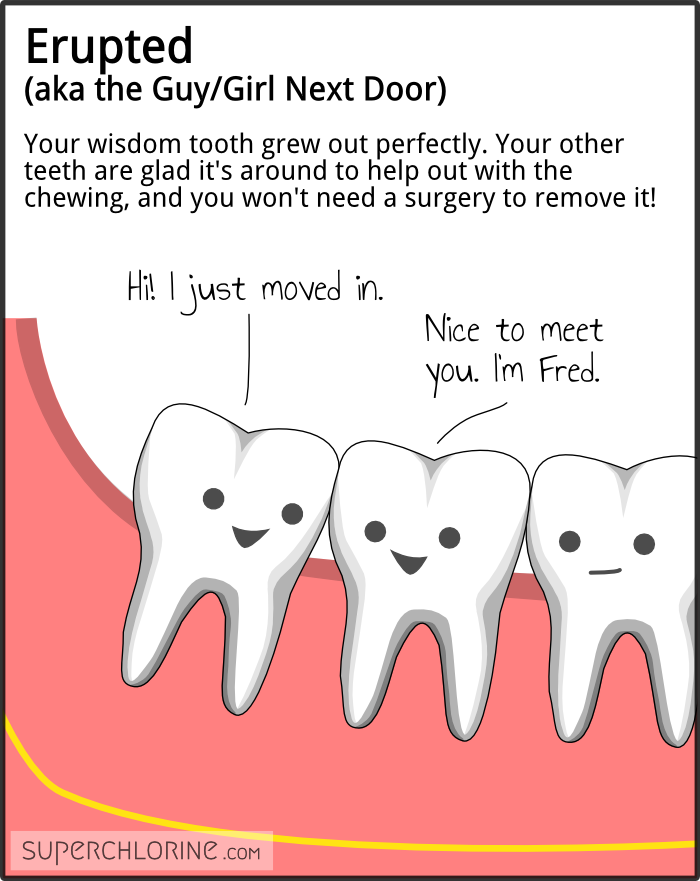 This is the name of the inflammation of the part of the gums, which, like a hood, covers a half-cut tooth.
This is the name of the inflammation of the part of the gums, which, like a hood, covers a half-cut tooth.
Why do people need wisdom teeth?
Wisdom teeth we inherited from our distant ancestors, who ate mainly hard and tough food. To chew it, powerful jaws were required. Over time, human nutrition has changed. Today we consume a lot more thermally processed foods. The “softening” of the diet led to the fact that the “eights” lost their original function, and the jaw itself decreased. In the modern world, primary adentia of the third molar is increasingly observed, that is, a situation where buds of wisdom teeth are not formed .
According to statistics, provided by nature maximum wisdom teeth (that is, four pieces) are approximately 92% of adults . In 25% of humanity, third molars remain under the gum. And approximately 8% are not observed even in the embryonic state, which indicates not a pathology, but only an individual feature.
A significant part of modern scientists believe that the large outer teeth - is a useless rudiment that creates too many problems, and the best solution is to remove the wisdom tooth at the initial stage of its formation. However, experts also note the useful functions of the "eights". For example, they protect neighboring teeth from loosening and creating gaps in which food can accumulate. In addition, it is to the large extreme teeth that a bridge is sometimes attached.
What complications can wisdom teeth cause?
Most often, wisdom teeth grow with complications . They can be displaced, tilted, or incompletely erupted, causing inflammation of the bone and gums, breaking the bite, injuring the inside of the cheek, and destroying the teeth with which they come into contact.
The main cause of complications – small jaw, which simply cannot accommodate the maximum number of teeth. It is the lack of space that causes crowding of the teeth or their retention (semi-eruption). Third molars are born when the growth of the jaw bones gradually fades away. Therefore, wisdom teeth simply have nowhere to grow.
It is the lack of space that causes crowding of the teeth or their retention (semi-eruption). Third molars are born when the growth of the jaw bones gradually fades away. Therefore, wisdom teeth simply have nowhere to grow.
Fig. 1. Abnormal position of the wisdom tooth
Eruption of the wisdom tooth, in addition to general discomfort (pain, swelling of the gums, fever) in 80% of people provokes purulent inflammation , which can pose a real danger to health and life. The gum around the cutting wisdom tooth takes the form of a pocket with a hood, under which plaque, food debris and bacteria accumulate (see Fig. 2). This causes festering and an unpleasant odor.
Fig. 2. Pericoronitis (purulent inflammation of the gums)
In addition, the third molars occupy the last, most inaccessible place on the jaw and are often poorly cleaned during hygiene procedures. This contributes to the development of caries, which often passes from wisdom teeth to other teeth.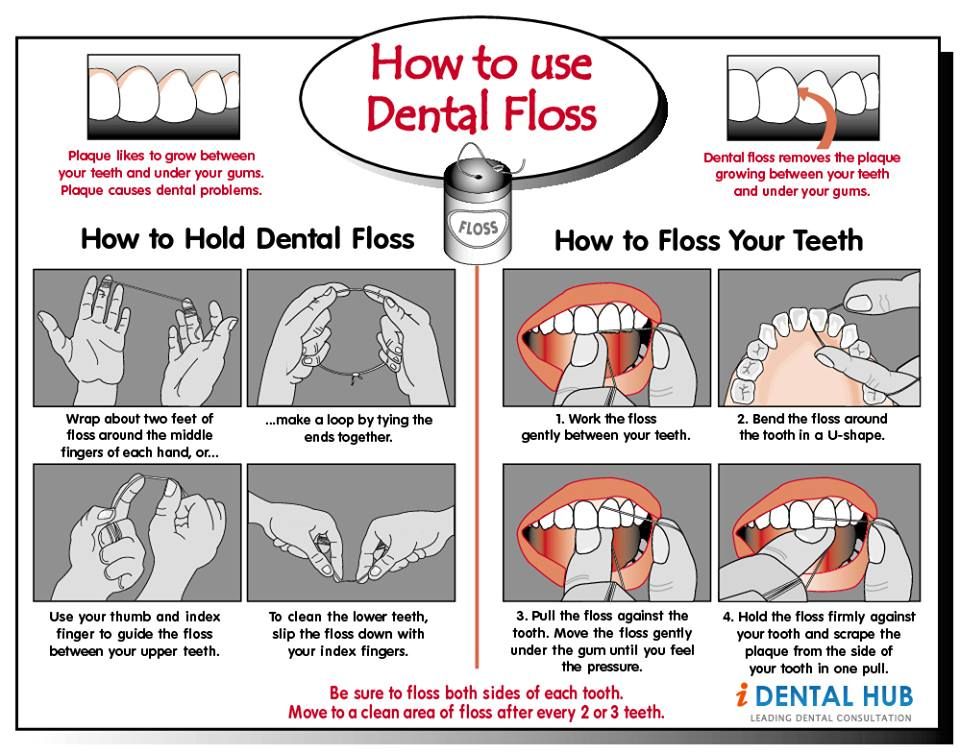
To prevent complications associated with teething of wisdom teeth and occlusion, I highly recommend visiting an orthodontist - who specializes in correcting occlusion.
Wisdom teeth: extract or treat?
If the third molar has grown correctly and is only affected by caries, it is quite possible to treat it. Although the inconvenient location makes it difficult to treat a wisdom tooth. In case of more serious complications, it is better to discuss the expediency of medical procedures with a doctor.
Should wisdom teeth be removed? If there is no room left in the jaw for another tooth, the third molar will have to make its way, crowding out competitors (adjacent teeth). So, complications are inevitable. In this case, the best way out is the removal of the wisdom tooth.
Fig. 3. X-ray (Konstantin, aged 16 and 20)
Here is Konstantin's X-ray. The first was made during a routine examination, when he was 16 years old and the attending physician revealed the beginnings of wisdom teeth in him.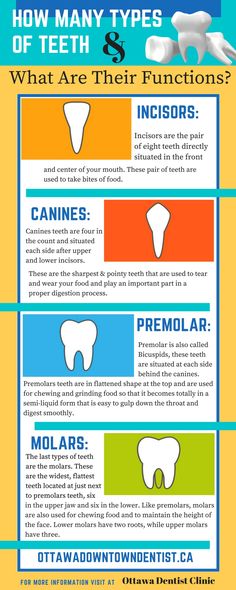 The orthodontist found that there was not enough space in the dentition, and recommended that the “eights” be removed. The patient did not dare to do so. And four years later, he complained that his wisdom tooth hurts, the temperature increased, and crowding of the teeth was observed. The surgeon performed a complex operation to remove problematic molars, which four years ago could have been much easier and cheaper. In addition, after the removal of a wisdom tooth, Konstantin is shown wearing braces, which also requires certain financial investments.
The orthodontist found that there was not enough space in the dentition, and recommended that the “eights” be removed. The patient did not dare to do so. And four years later, he complained that his wisdom tooth hurts, the temperature increased, and crowding of the teeth was observed. The surgeon performed a complex operation to remove problematic molars, which four years ago could have been much easier and cheaper. In addition, after the removal of a wisdom tooth, Konstantin is shown wearing braces, which also requires certain financial investments.
Also remember that a wisdom tooth during pregnancy can be removed no earlier than the 13th and no later than the 32nd week. It is during this period that the mother's immunity is as high as possible, and the risk to the fetus is minimal. Nevertheless, the best option for a pregnant woman is regular visits to the dentist and prevention of possible problems (including with wisdom teeth).
Can problems with wisdom teeth be avoided?
Of course you can.